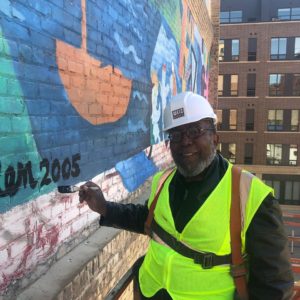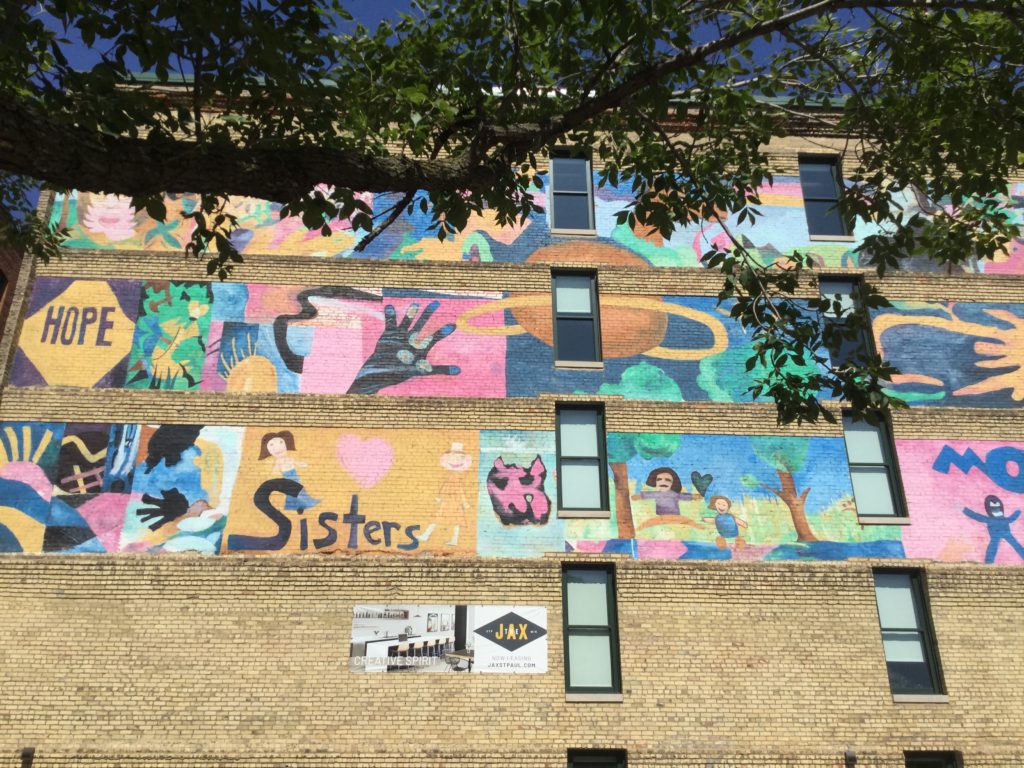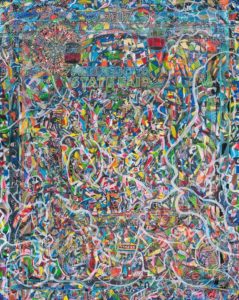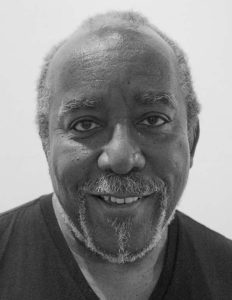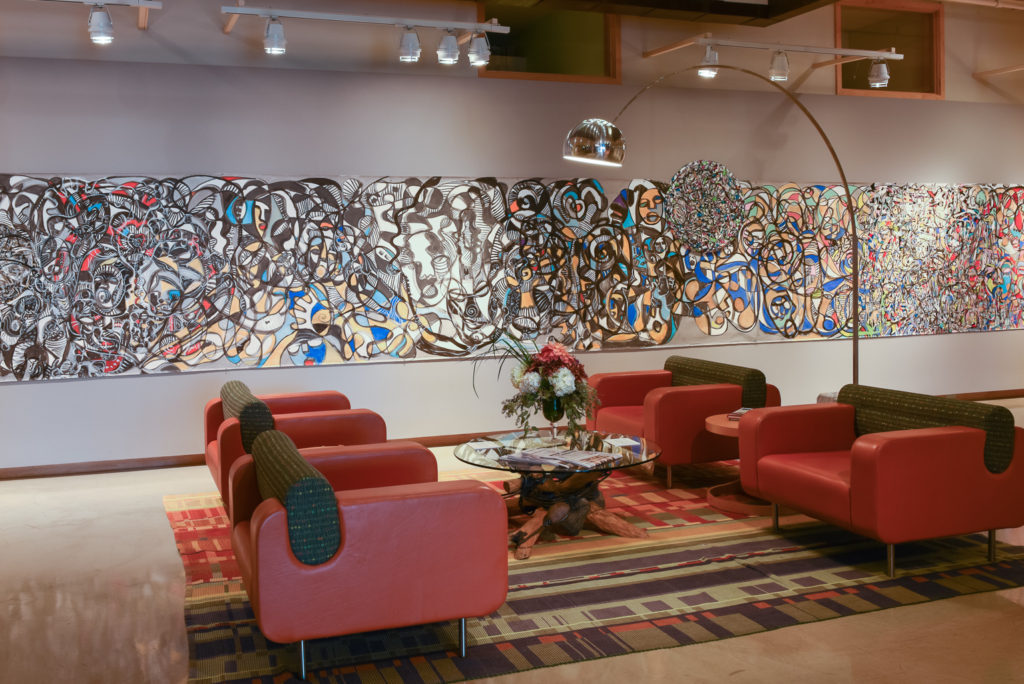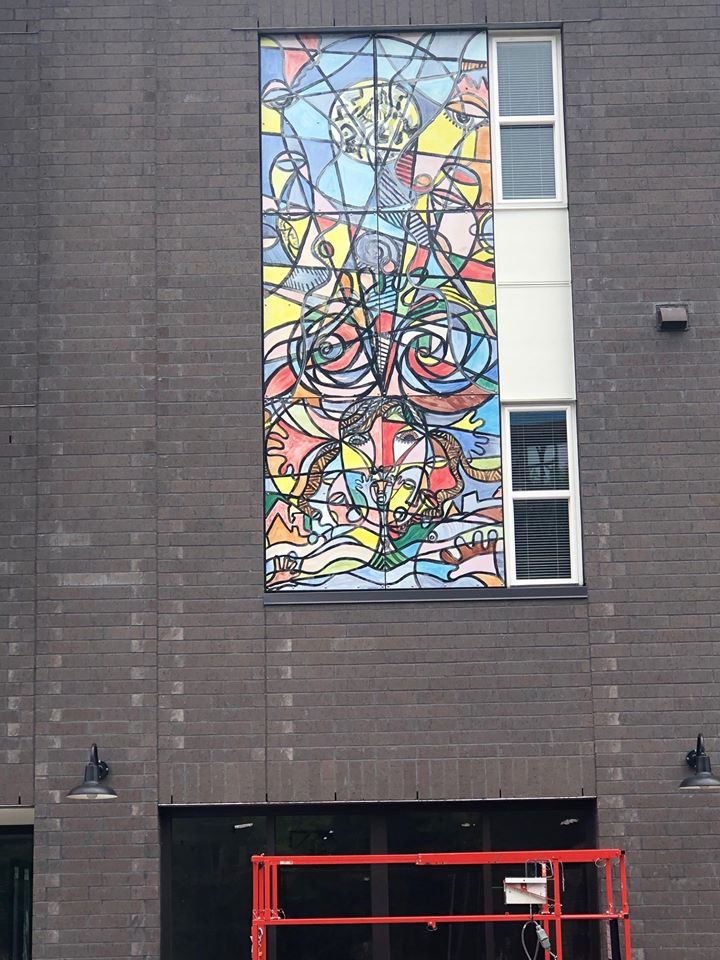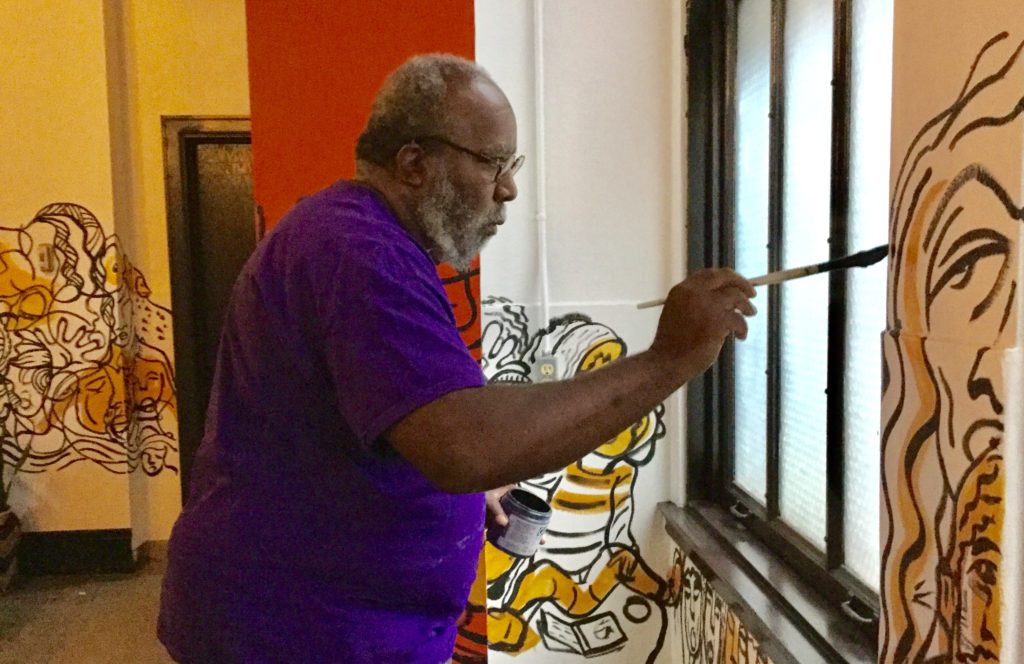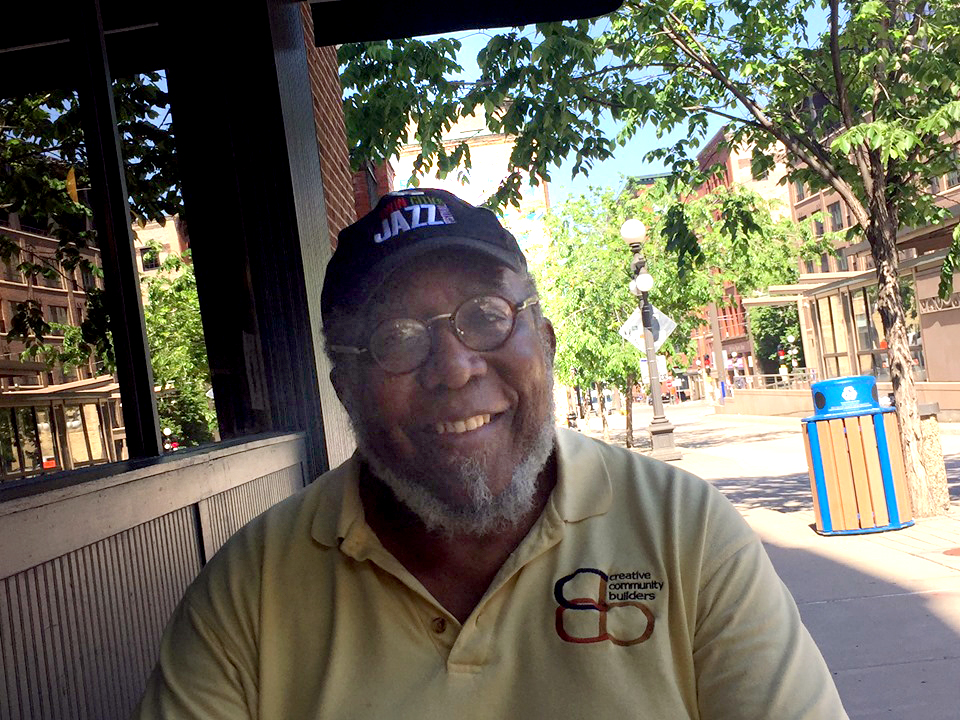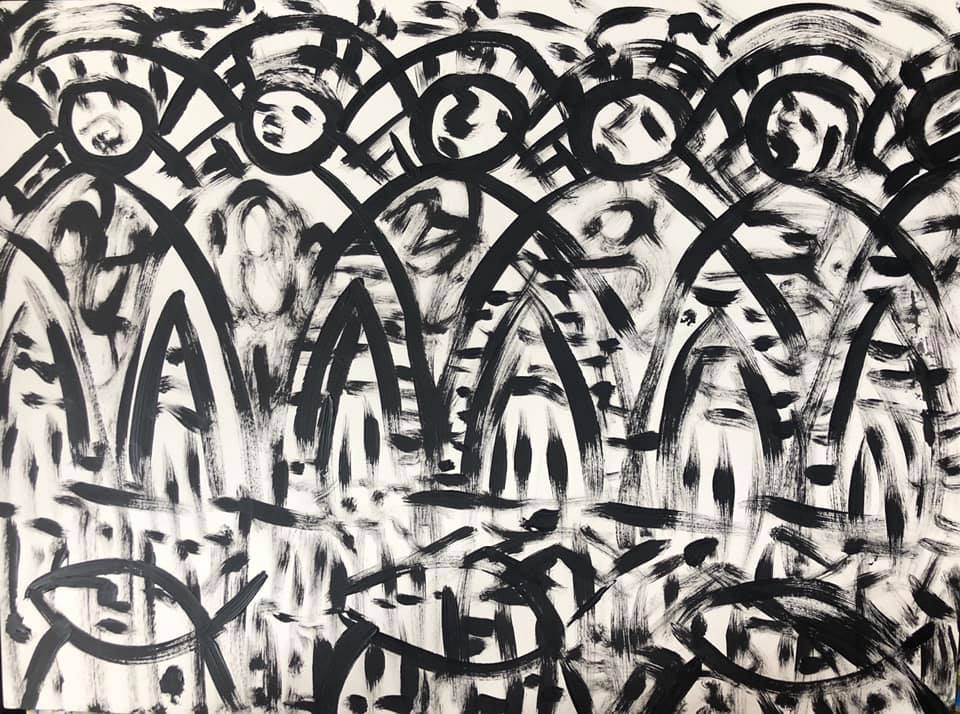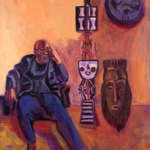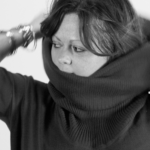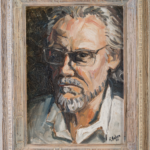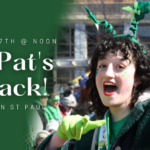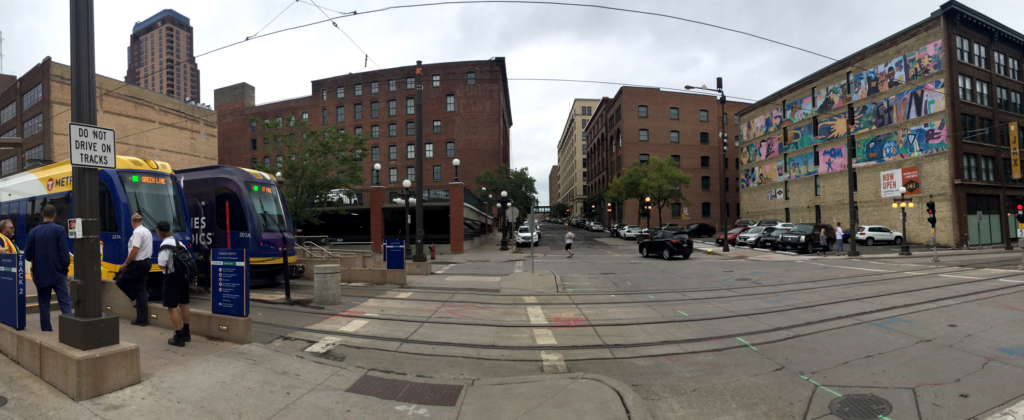
Panoramic shot of the Union Depot light rail stop and, to the right, the “Be Nice” mural, created based on artwork by patients in Gillette Children’s Hospital. (Photo: Nigel Parry)
In Minneapolis, he created the bronze “shadow spirit” figures on the Nicollet Mall in collaboration with visual artist Seitu Jones, and the ceramic tile mural at the Chicago-Lake Metro Transit hub. In outstate Minnesota, he even created an 80-foot-tall mural on a grain elevator in Good Thunder Township.
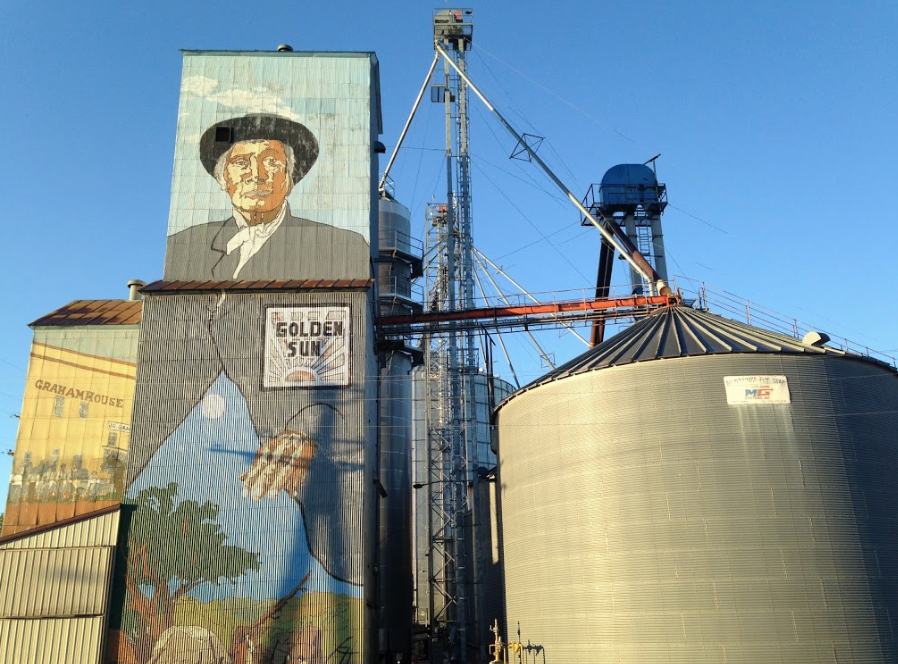
The 1987 Good Thunder Township grain elevator, bearing Ta-coumba’s mural. (Photo courtesy Protein Sources Milling)
Aiken uses swirling patterns, a distinctive style of rhythmic pattern he calls “spirit writing,” and designs that evoke colors and shapes from native African art. His textures and use of lighting often result in a faux 3D effect. In 2013, he created a mural in light that was later judged a Guinness World Record for being “the largest Lite-Brite picture” ever. The 8-by-20-foot mural used nearly 600,000 pegs and enlisted the help of more than 600 volunteers, including this writer.
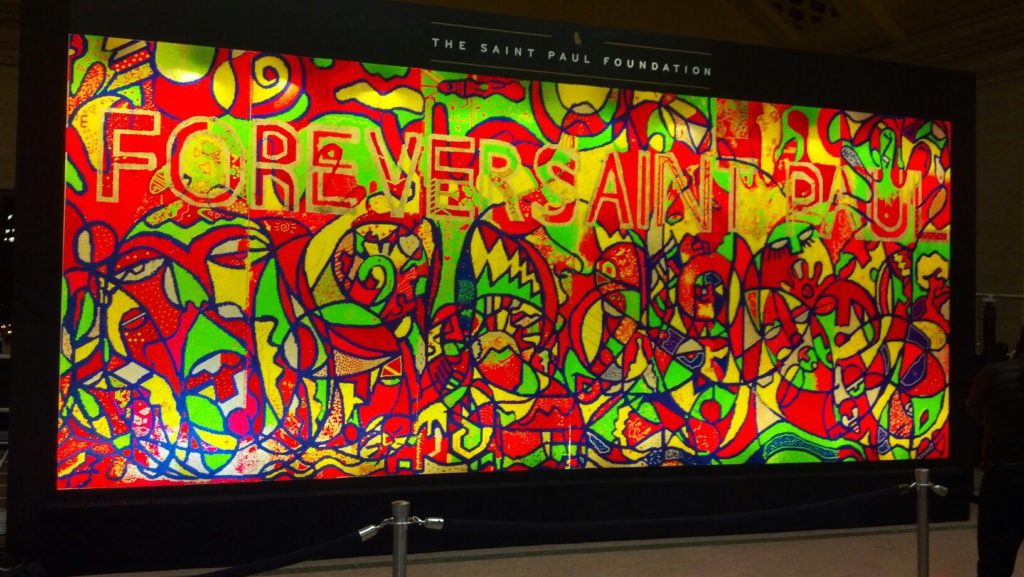
The Guinness World Record-winning Lite-Brite mural, on permanent exhibit in the Union Depot. (Photo courtesy of artist)
Aiken grew up in Evanston, Ill., where he began drawing and painting at age three. At age six, he had his first exhibit—in the basement of his family’s home—and collected $657.36 in a cigar box.
Obliging his father, he attended Yale University and took pre-law courses for one year before realizing that career path was not for him. He moved to the Twin Cities and enrolled in the Minneapolis College of Art and Design, which today features his art in its permanent collection.
Aiken has received many prestigious arts fellowships over the years, including from the Pollack-Krassner Foundation (1988), the Minnesota State Arts Board (1991) and the Bush Foundation (1992).His major exhibits include “Spirit House” at the Minneapolis Institute of Art in 1988 (a collaborative effort with Seitu Jones and Bill Slack); an installation at the Walker Art Center’s 1992 “Interrogating Identity” exhibit; and the 2019 “Shadows at the Crossroads” at the Walker’s Sculpture Garden, also in collaboration with Seitu Jones.
More than 600 murals and works of public art bear his name. Many of his projects involve participation by members of the community where the art will be displayed. He has also taught in prisons.
Aiken is a founding member of the oldest artists’ cooperative in Lowertown, the Lowertown Lofts Artists Cooperative, and has lived in the neighborhood for 34 years.
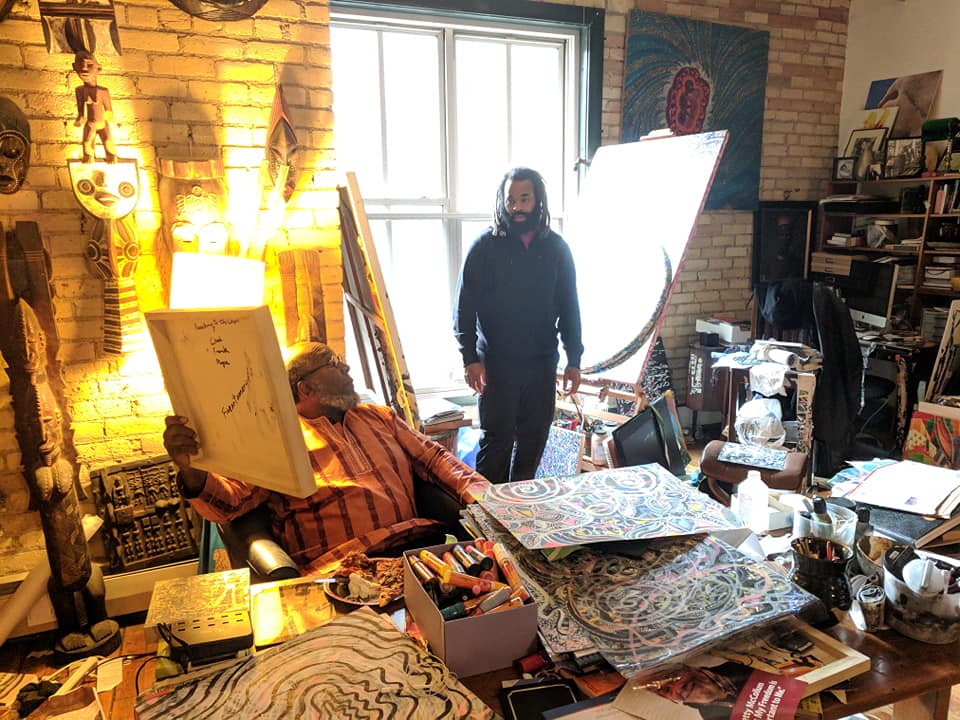
Ta-coumba working in his studio in Lowertown Lofts Artists Cooperative. (Photo courtesy Tasty Keish)
“Lowertown was desolate then, with broken streetlights,” he recalled. “There were some artists’ lofts in what today is known as Lowertown Commons but not much else. We were committed to creating a space that would attract other artists. We wanted to create something stable.
“We tried talking with the JAX artists and Northern Warehouse artists 20 years ago about owning their own buildings, but they weren’t interested. In a few years, the Northern and Tilsner leases will be up. It’ll be interesting to see what happens then. I would have loved to see artists own the JAX but the only realistic way for that to have happened would likely have involved having some of the building dedicated to market-rate apartments. We don’t see the same arts housing philanthropy as you do in Minneapolis.”
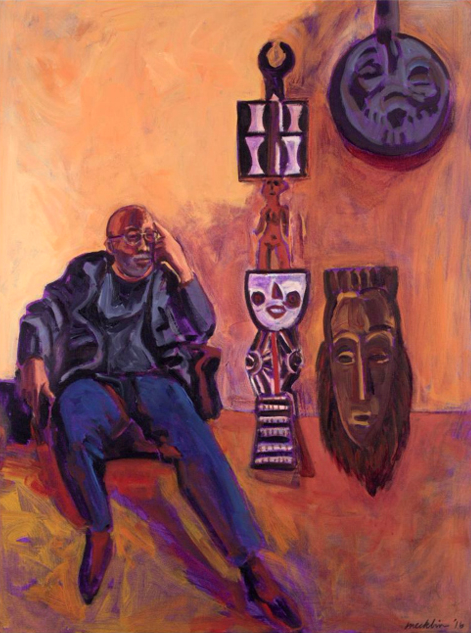
Ta-coumba, part of longtime Lowertown resident and visual artist Caroline Mecklin‘s “Lowertown Makers & Shakers” series.
In a time of gentrification, only a few of the new owners in the condo, apartment and restaurant sectors have bothered to interface with the local artist community. The new owners of the JAX—now exclusively market-rate apartments—are ones who have.
They commissioned Aiken to complete five pieces for the building’s inner lobby and ground-floor hallway. In addition, new residents in the neighborhood have been snapping up local art. Aiken alone has sold more than 30 pieces to residents of the JAX, Lowertown Commons and the Great Northern.“It wasn’t always easy over the last 34 years,” said Aiken. “I was functionally depressed at times. I ultimately found my place on the Black Dog Café patio, working on art there and meeting people; and friends in this building have always had each other’s backs. It was often a struggle, paying the mortgage and looking after my kids, both of whom were living with me at one point. But we made it through.
An interview with Ta-coumba about gentrification in Lowertown
I love Lowertown,” he added. “I love the idea that this community could happen. I like the fact that people can get along and people do talk with each other. Fear and hate come from ignorance and not knowing people, so I try to encourage people to get to know each other.”
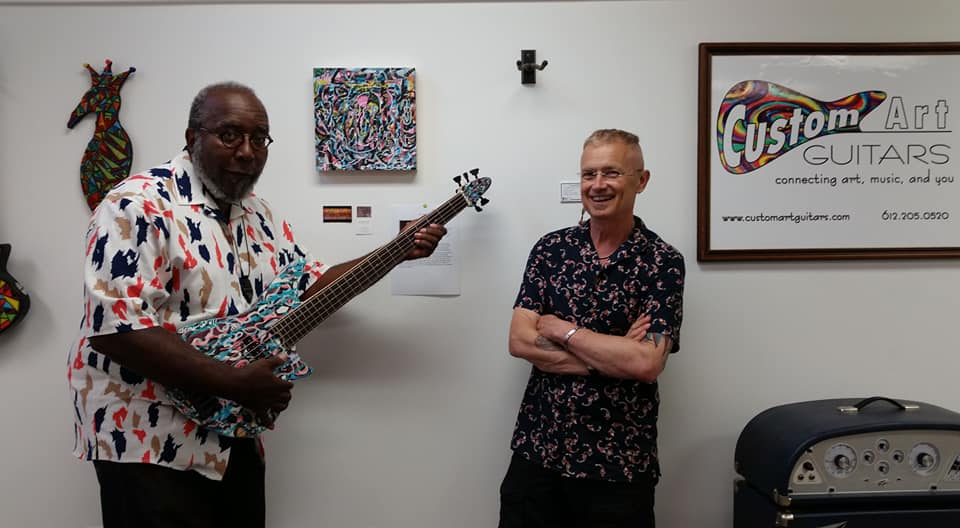
Ta-coumba with a guitar he painted for Lowertown luthier Gene Kuschnir. (Photo courtesy Gene Kuschnir)
Indeed, Aiken is known throughout the neighborhood as “The Mayor of Lowertown”—even former St. Paul mayor Chris Coleman called him that. And while he has given much to Lowertown, he has also been on the receiving end as well. For example, when he needed surgery in 2015, a GoFundMe page was established to help him. In the first 24 hours 51 people donated $2,400. The appeal ultimately raised $7,415, shattering the $6,000 goal.
Aiken’s artwork can be seen at www.tacoumbaaiken.com, and private studio viewings can be arranged by appointment.

